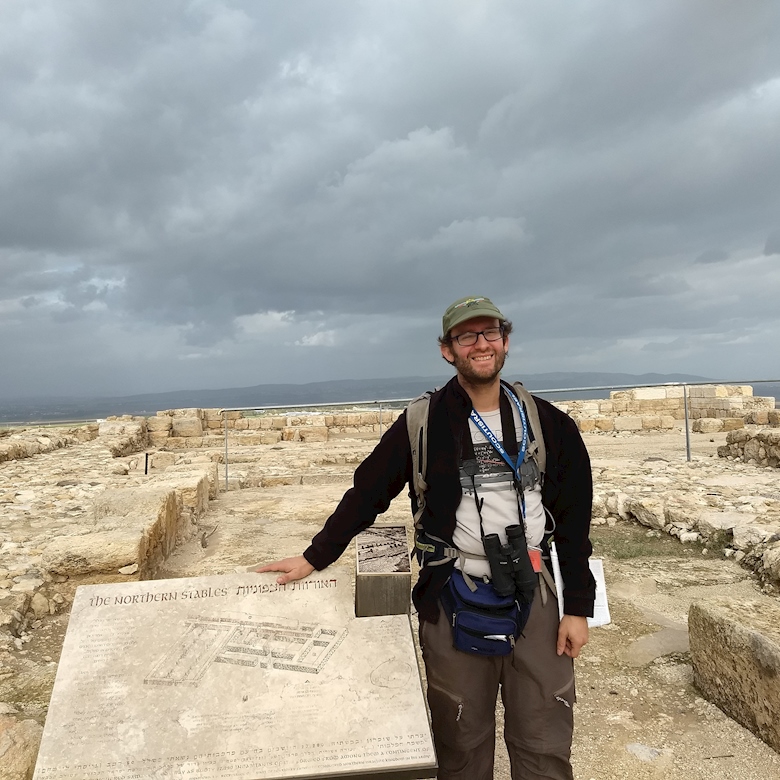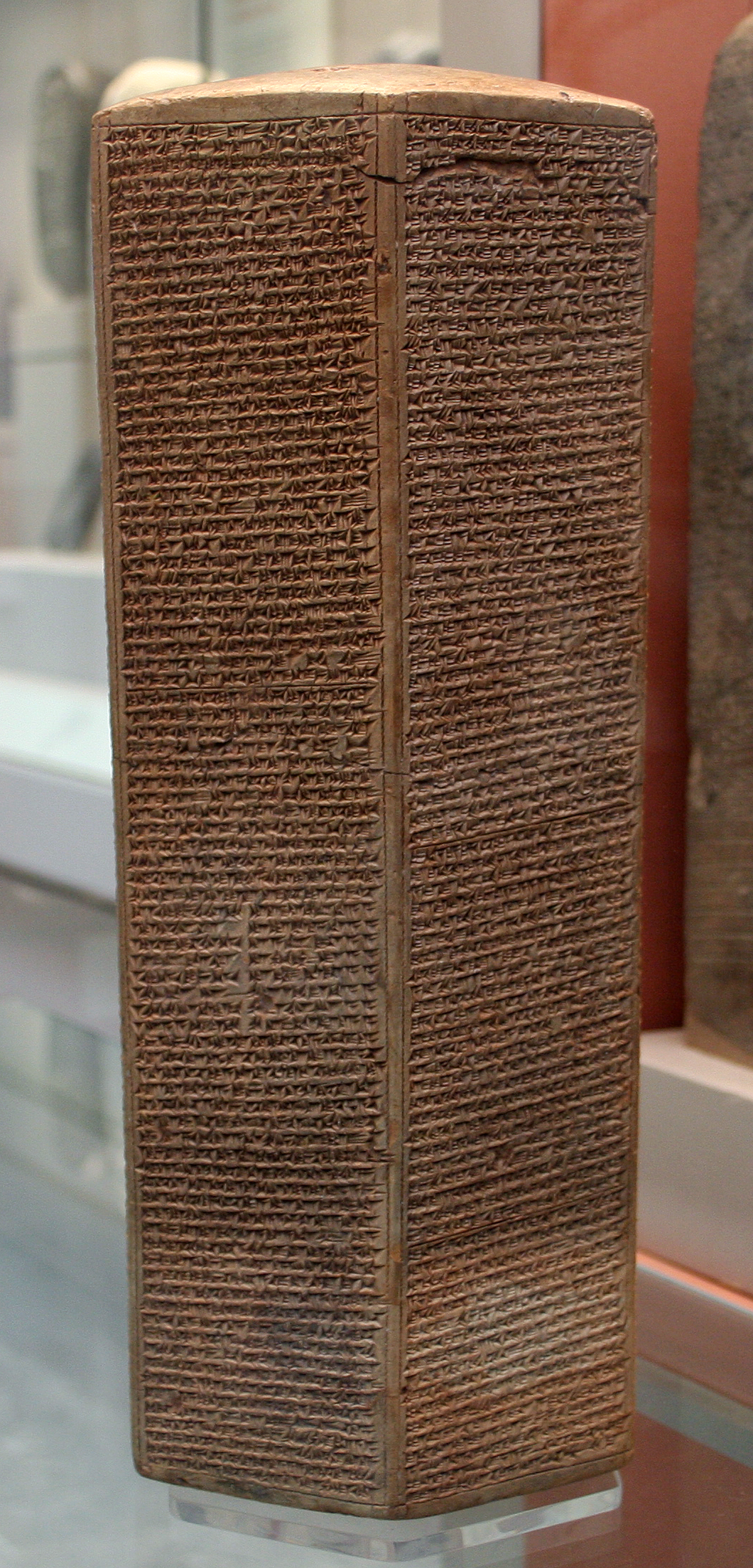
Continuing from my last Podcast I am now dealing with the historical issues surrounding Josiah. I tell the dramatic story of the battle of Armageddon and finally answer the question: who is the evil King?


Continuing from my last Podcast I am now dealing with the historical issues surrounding Josiah. I tell the dramatic story of the battle of Armageddon and finally answer the question: who is the evil King?
If you’ve been following my podcasts recently you might know that I’ve been talking mainly about King Hezekiah and his son Menashe of Judah. Hezekiah lived around the same time as the Assyrian Emperor Sennacharib 705-681 BCE. There is a clay prism in the British Museum which chronicles Sennacharib’s life. It mentions Hezekiah too. It describes Sennacharib’s conquest of Judea and siege of Jerusalem.
(If you are looking for the podcasts scroll to the bottom of the page)

The Taylor Prism viewable in the British Museum
The British Museum used to have a complete transcript available online. It got removed, I will update this page with any further resources.
In addition to the Prism there is also a display in the British Museum of a wall frieze of the siege of Lachish, a town in the foothills of Judea. This siege is both mentioned on the Prism depicted above and the Bible, namely in the book of Kings (II Kings 18) and Chronicles (II Chronicles 32).
The Frieze includes:
A depiction of Sennacharib sitting on his throne at the gates to the city:

Source : Wikimedia Author : User:oncenawhile
Depictions of the battle:

Photograph by Mike Peel (www.mikepeel.net)
And, as mentioned in the podcast the capture and punishment of enemies, possibly a cruxifiction, possibly a flaying, what do you think?

Source: Wikimedia Author: Zunkir
Fairly recently an archaeologist called Eilat Mazar found an official Bullae or clay stamp of Hezekiah in an archaeological park called the City of David. I have also sketched my observation of the stamp. Note that the lettering is “Proto – Canaanite script and the “logo” of Hezekiah is a sun with wings and an Ankh.
If you listen to the podcasts posted at the bottom you will hear that this is part of the evidence confirming both Hezekiah (podcast 8) and Menashe (Podcast 9) as historical actors.

Source: Wikimedia Author: Rubén Betanzo S.
Similar “logos” were found on numerous jug handles from the same era possibly for the collection of money or produce for the King, in fact “for the King” was written on many such handles.
In addition to this we have a 533m long tunnel outside the Old City of Jerusalem amongst other building projects that as you will hear in podcast 8 Hezekiah and later Menashe (Podcast 9) build structures that include the tunnel depicted below.
On Tour at Hezekiah’s tunnel, City of David
If you want to help: please share this article.
In order to produce more articles and podcasts I need to pay bills, contributions will be happily recieved by clicking on the coffee mug below.
I’ve been very busy.
As you well might imagine my business took a nose dive due to the International COVID-19 crisis. All the planes from abroad were cancelled and any form of socializing was prohibited for a short space of time. My regular job at the Western Wall Tunnels ended. All tours were cancelled for the foreseeable future.
I did not stop, I did not give up and still today I am touring, educating and learning.
As soon as I could, I started work at an archeological site, not as a glamorous educator, but as a worker shifting buckets of sand in the hot sun. This I call my daily Archeo-Zumba!
I started this Youtube channel:
https://www.youtube.com/channel/UCcQWuD6k-Xruf1H1dVqUyUw
I recorded a new podcast and am recording another one right now!
And I haven’t finished yet…
I started a subreddit too!
Do you want to help?
Then Please Comment!
Like and Share my work!
If you really want to help physically, I need to be able to sustain these media, improve my hardware, pay bills (of course!) and drink the occaisional coffee!
I’m in the process of uploading my podcasts to YouTube.
This is the latest upload.
A discussion of scriptural references to Arameans in the Passover Seder and their connection to Isaac and Rebecca and Jacob and Esau.
I focus specifically on the verse in Deuteronomy דברים 26:10 :
Either:
“My father was a wandering Aramean”
Or
“An Aramean oppressed my father”.
Which translation do you favor?
Leave a comment and tell me.
I started a new YouTube channel with a new project called Pop up Docu-tours.
Here’s the first video, it’s a general overview of the Old City from the Haas Promenade.
Bibliography
Hittite Treaties and Letters, D. Luckenbill
The American Journal of Semitic Languages and Literatures
Vol. 37, No. 3 (Apr., 1921), pp. 161-211
Reflections on The Mitanni Emergence, G. Schwartz
Berlin Studies of the Ancient World, Vol. 17
The Beginning of Desire: Reflections on Genesis, A Zornberg
Image Books 1996
Studies in Bereishit, Nechama Leibowitz
Jerusalem, WZO, 1976
Pseudo Translation of Yonatan ben Uzziel:
http://targum.info/targumic-texts/pentateuchal-targumim/
Please see the main Bibliography for more.
Tanach – The Jewish Bible, an anacronym of Torah (1st 5 books), Nevi’im (prophets), Ketuvim (Witings). Any Hebrew Tanach with clear print will do. preferably with all the major commentaries for this you will need:
Tanach with Mikraot Gedolot.
The Jewish Bible: Tanakh: The Holy Scriptures — The New JPS Translation According to the Traditional Hebrew Text: Torah * Nevi’im * Kethuvim JPS Paperback – November 1, 1985
An English Translation of Rashi on the Pentateuch M. Rosenbaum and A.M. Silbermann (5 vols., London, 1929–34)
Carta Bible Atlas, Y. Aharoni, Hendrickson Publishers, 2015
Archaeological Encyclopedia of the Holy Land, A. Negev , Mackmillan, 1990 (constantly updated)
A Chronology of Israel, A Wolff, 2008
The Jewish People: Their History and Their Religion , D. Goldberg and J Rayner Penguin 1992
Biblical Archaeology Review, Ed. Herschel Shanks, 1975 – present,
The Beginnings of Israel: A Methodological Working Hypothesis, Zecharia Kallai, Israel Exploration Journal, Vol. 59, No. 2 (2009), pp. 194-203
Jar-burial Customs and the Question of Infant Sacrifice in Palestine, WH. Wood, The Biblical World, 36.4 1910
Bereishit (Genesis) Rabbah – A Hebrew midrash, a translation can be found at: http://www.sefaria.org/Bereishit_Rabbah
Midrash Tanchuma – Another Hebrew Midrash, a translation can be found at http://www.sacred-texts.com/jud/mhl/mhl04.htm
Welcome to my first podcast in the series: “The History of Judaism”. I shall be telling the History and story of the Jews from an educated Jewish Perspective. the first podcast focuses on Abraham and my decision to place this as the start of my narrative about Jewish History.
Here is a Map of Abraham’s Journeys:
Next time: A Journey to the Other Side: Abraham’s historical narrative
(The music in this podcast is “By Way of Haran” by Pharoah’s Daughter recreated under the following creative commons license “Live on WFMU’s Transpacific Sound Paradise 12/12/2009 byPharaoh’s Daughter is licensed under a Attribution-Noncommercial-No Derivative Works 3.0 United States License.” Check out the band at www.pharaohsdaughter.com/music.html )